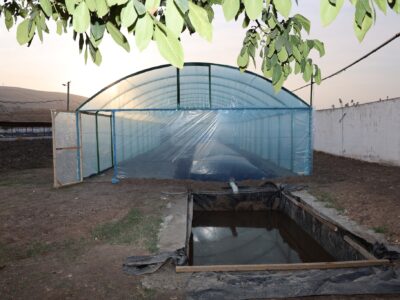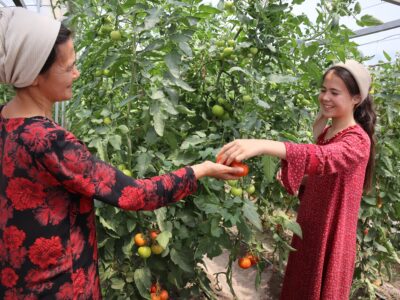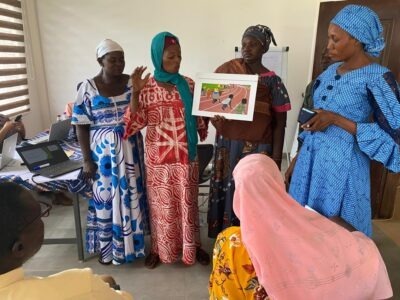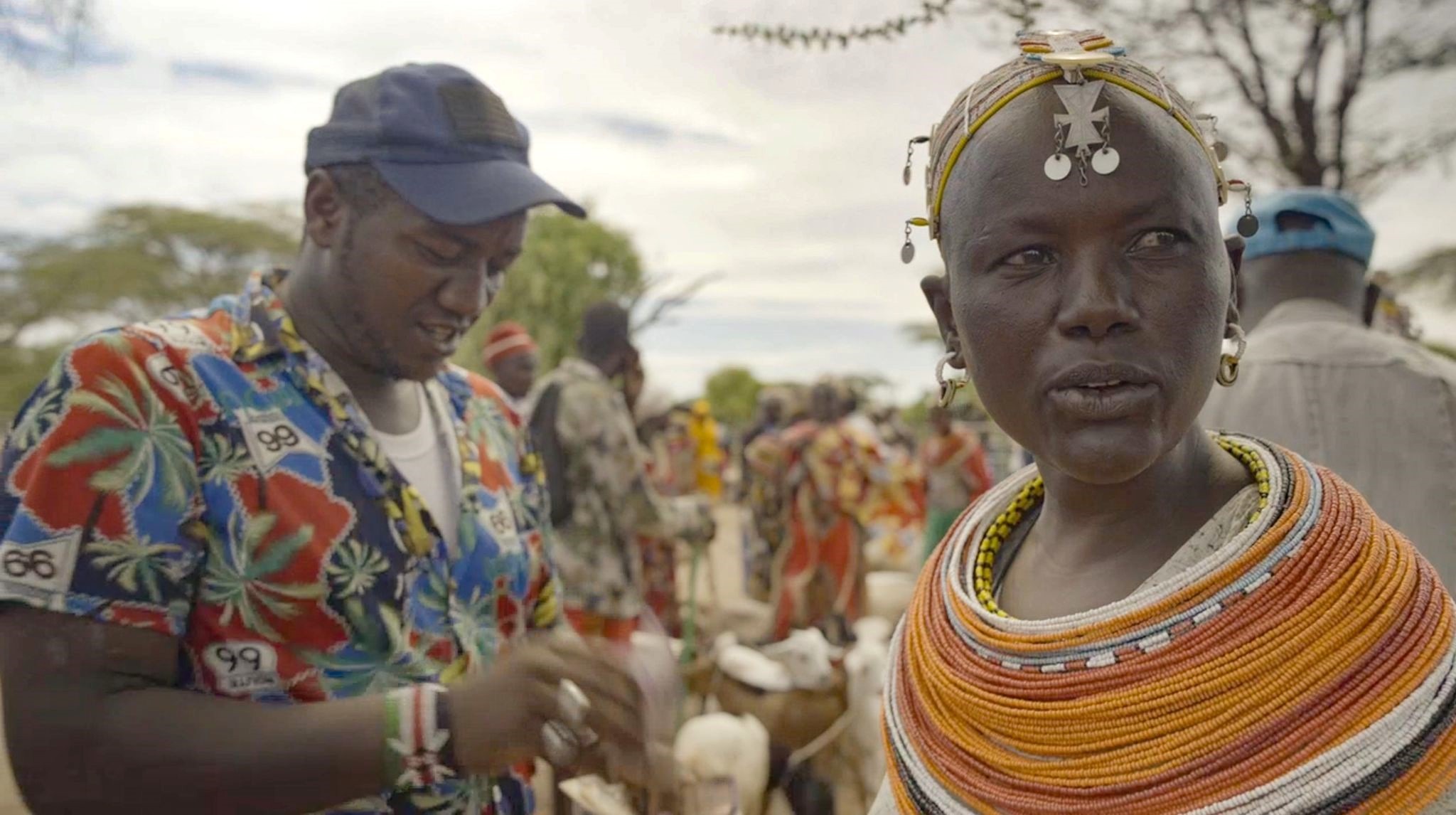
Feed the Future Kenya Livestock Market Systems (LMS) Activity, 2018-2024
In northern Kenya, 80 percent of the population relies on livestock keeping as their main source of livelihood. To strengthen their resilience to shocks and stresses, Feed the Future Kenya Livestock Market Systems Activity, funded by the U.S. Agency for International Development (USAID) and implemented by ACDI/VOCA, aimed to reduce the prevalence and depth of poverty, hunger, and malnutrition. The Activity supported 55,000 livestock traders in improving their household incomes by up to 40 percent.
Our Collaborative Efforts
The Activity worked with over 120 institutions and 7,405 micro, small and medium enterprises:
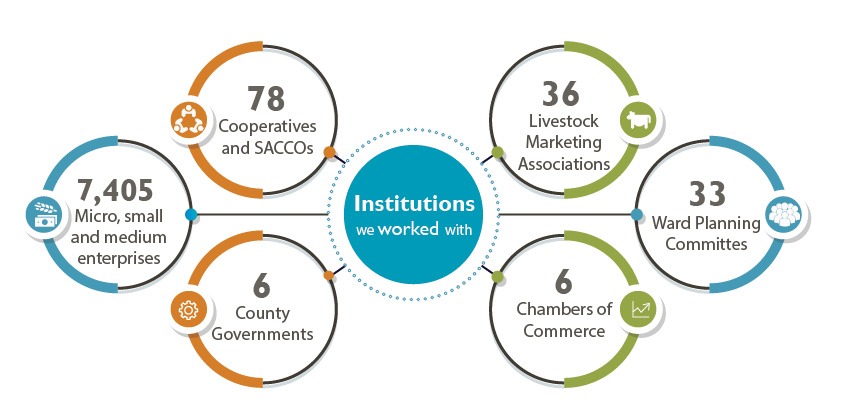
Formalized Livestock Markets and Improved Livelihoods
The Activity collaborated with county governments and partners to formalize livestock markets and equip livestock marketing associations (LMAs) with knowledge and skills to manage markets and ensure sustainability. The operationalization of the livestock markets created jobs within the market ecosystem, including boda boda (motorcycle) operators, food vendors selling soft drinks and cooked foods, mama mbogas (fresh produce sellers), security guards maintaining safety, and cleaners upholding hygiene standards.
The Activity also created strong linkages between pastoralists and input suppliers, improving access to extension services, feeds, and veterinary drugs. Livestock market savings and credit cooperative associations (SACCOs) also supported the expansion of livestock enterprises in northern Kenya, changing savings and financing behaviors and serving as a buffer to shocks or stressors.
The Activity’s final evaluation which surveyed 218 Activity participants indicated that the knowledge gained on best livestock-keeping practices and fodder production had improved the quality of their animals. Additionally, livestock markets that were now closer to them were attracting external traders who offered better prices resulting in increased incomes from their livestock. Market sales increased household savings alongside access to more affordable, nutritious foods at the household level.
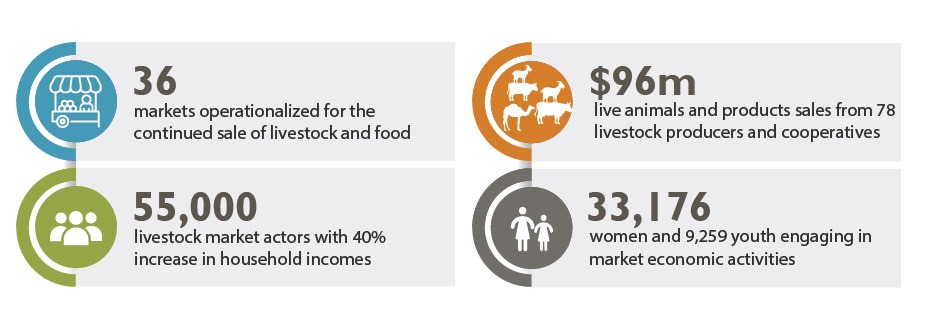
Improved Access to Financial Products and Services for Entrepreneurs
The low rate of credit access through mainstream commercial banks bore the need for establishing new SACCOs and enhancing the management of existing ones to ease access to financial credit for entrepreneurs. The Activity’s monitoring data indicated that only 11 percent of its participants accessed credit facilities from mainstream commercial banks which were majorly constrained by lack of guarantors, collateral, and proper business records. The Activity’s training on savings to women and adolescent girls also led to the formation of savings groups which provided a platform for saving and credit for the group members.
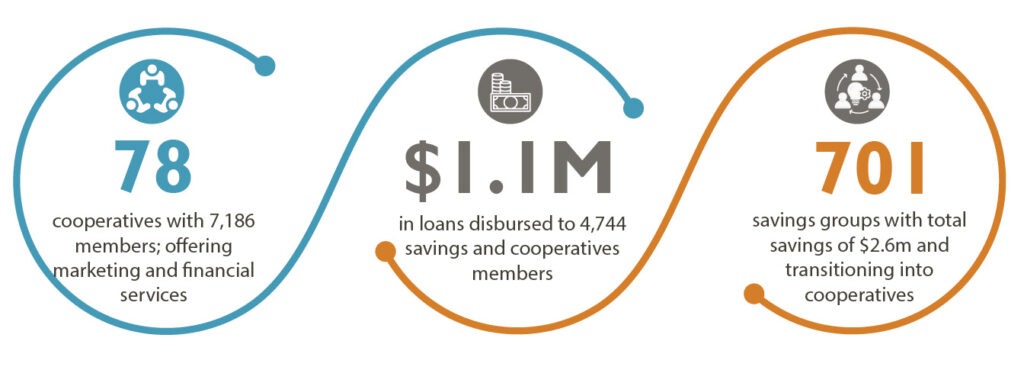
“LMS conducted training sessions where the SACCO members were educated on loan policies. As a result, the SACCO formulated their loan policies, including emergency loans, school fee loans, normal loans, development loans (three times the member’s savings), and a credit policy guide for loan issuance.”
feedback from a focus group discussion session
Increased Employment and Entrepreneurship Opportunities
The Feed the Future Kenya Livestock Market Systems Activity facilitated the development of micro, small, and medium enterprises (MSMEs) and provided them with technical assistance to grow their businesses, including access to finance. The Activity also supported the enterprises with cash transfers to cushion against the effects of the COVID-19 pandemic and the prolonged drought. The cash transfers came at a time when their businesses were on the verge of collapse due to rising food and commodity prices also influenced by the Ukraine crisis.
In the Activity’s final survey, 68 percent of entrepreneurs indicated that their profits had increased by 10 to 20 percent with the rest indicating an over 20 percent profit increase. Just over 60 percent of the respondents attributed their business growth and profitability to the Activity’s support through cash transfers when the businesses were most vulnerable to shocks and stressors. Improved business relationships facilitated through forums and other networking opportunities such as trade fairs and market linkages, incentivized more business members to join the Chambers of Commerce.
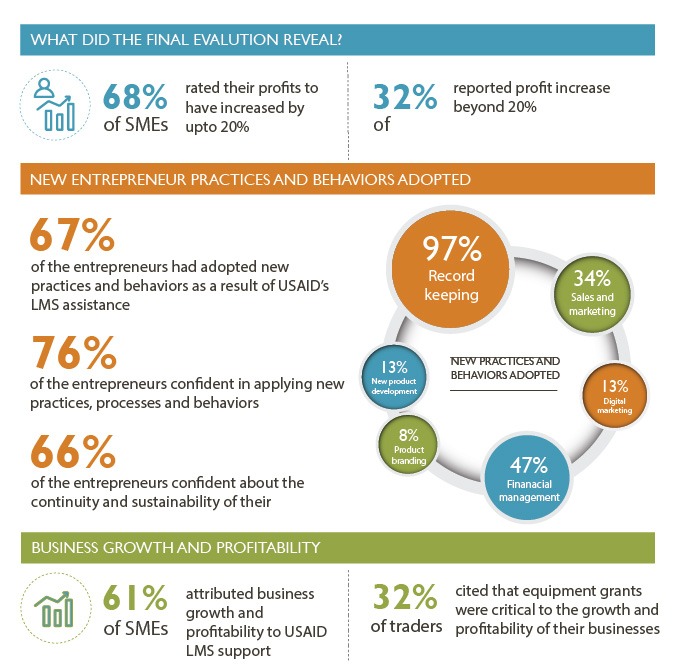
Strengthened Institutions for Economic Growth
Through various interventions in collaboration with county governments, the Activity strengthened key institutions such as Chambers of Commerce by supporting the development and launch of strategic plans to guide their operations and improve service delivery. The Activity also facilitated the establishment and training of county resource teams made up of government staff focused on rangeland management and ward planning committees, consisting of elected citizens to encourage community participation in development efforts and to coordinate with the government on those initiatives. This resulted in improved government services, buy-in, and enhanced mechanisms for decision-making around natural resource management, emergency planning, and conflict management.
The Activity also rehabilitated 42 water projects, improving water access for 140,112 people. To enhance the sustainability of the water projects, the Activity trained water management committees in skills such as recordkeeping, inclusivity, and water infrastructure management. The Activity mobilized county-designated rapid response teams to address emergencies at water point installations, especially regarding the restoration of boreholes.
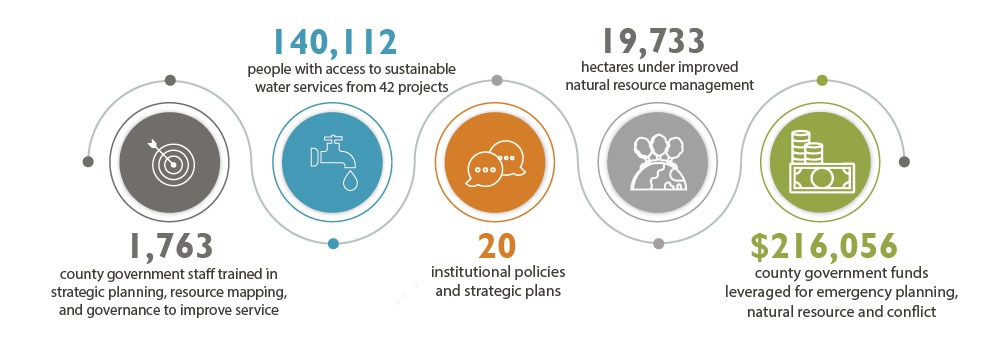
Leveraged Investments for Community Benefits
The Activity leveraged over $916,278 in public and private sector investments to support food traders and transporters, ensuring access to essential commodities. SMEs and SACCOs accessed $655,288 in agriculture-related financing, enabling 20,967 people to participate in group-based savings, microfinance, or lending programs. This support increased credit access for residents, allowing them to engage in activities that were previously unattainable, such as business expansion.
USAID economic stimulus grants to 5,497 SMEs created over 1,200 job opportunities and increased food and market access for 100,000 families. The Activity improved linkages between traders and farmers, stimulating market operations and reducing commodity prices.
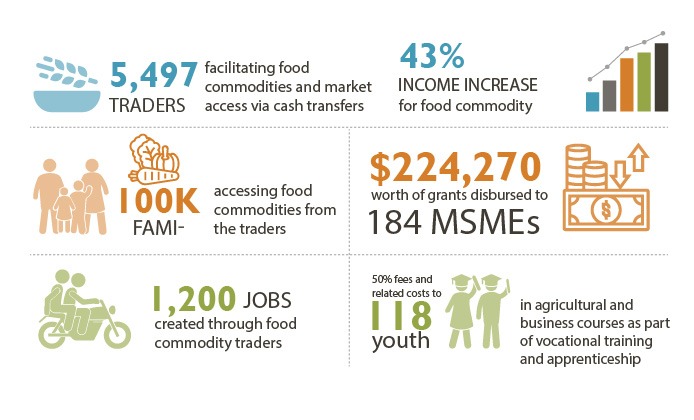
Increased Consumption of Nutritious Foods
The Activity facilitated nutrition training, promoted kitchen gardening, conducted social behavior change campaigns, and improved access to affordable, nutritious foods through vendors at LMS-assisted livestock markets. These efforts, combined with increased incomes, significantly influenced LMS participants’ dietary habits. The sustainability of this impact depends on the availability of nutritious food, which relies on the continued operation of livestock markets.
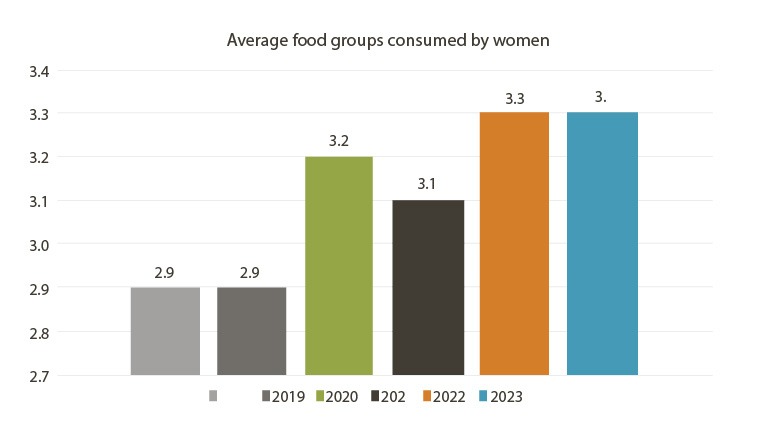
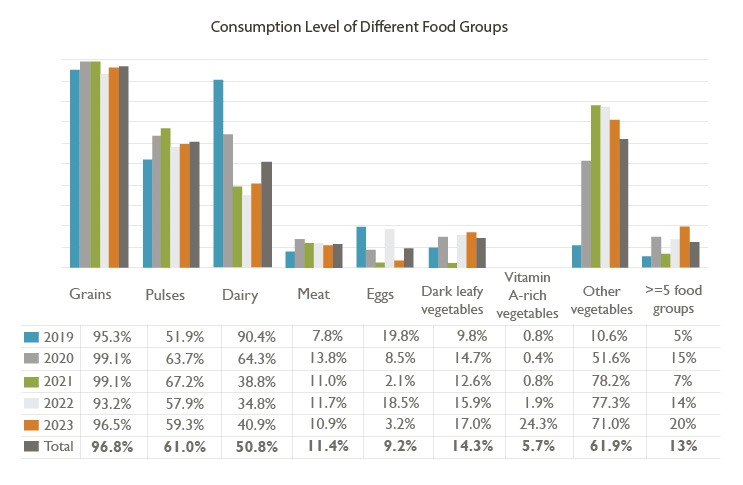
The Road Ahead
Feed the Future Kenya Livestock Market Systems Activity recommends that active market system projects continue supporting the implementation of livestock policies, establishing sales yards, and utilizing ward development funds to benefit livestock marketing associations (LMAs) and ward planning committees (WPCs). Investments in feedlots and the establishment of fodder will also be crucial to ensuring the production of high-quality livestock.
Developing feeder roads and water points will open up interior markets, enhancing economic opportunities for livestock producers. Continued collaboration with county governments, public institutions, and the private sector is essential for creating lasting and sustainable impacts, integrating social and behavioral change strategies in activity implementation, and improving access to finance for private actors within the counties will further strengthen the livestock industry.
Learn more about Feed the Future Kenya Livestock Market Systems Activity.
Hear from livestock keepers in northern Kenya.
Watch our learning event.

